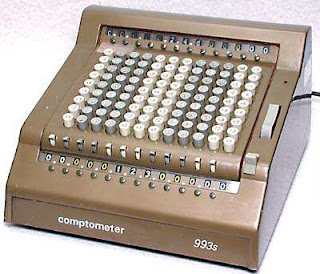Contact
lenses have a remarkable history that goes back more than 500 years.
In
1508, Leonardo da Vinci is often credited with the first conception
of the idea of contact lenses, in Codex
Of The Eye, Manual D. , where he explained a
means of manipulating the corneal power of eye by either submerging the entire
head in a bowl of water or by wearing a water-filled glass hemisphere over the
eye.
Actually
he wasn't really talking about correcting vision at that point, but the idea
behind the contact lens at its most basic came from manipulating the cornea's
power.
in 1636, René Descartes conceptualized a similar
idea where a hollow glass tube filled with water placed directly against the
cornea, with the protruding end being shaped in order to correct vision. The
only drawback of the idea was that it made blinking of eyes completely impossible.
Basically,
there were a lot of crazy ideas thrown down on paper before anyone attempted to
actually follow them through to their sharp conclusion, be it vision or pain.
In 1845, Sir John Herschel published two new ideas in the
Encyclopedia Metropolitana. The first was for a spherical capsule of glass
filled with animal jelly, while the second was a mould of the cornea that could
be impressed on a transparent medium. While there's no evidence that these
ideas were ever tested or not.
In
1887, German glassblower F. E. Muller developed the first eye
covering that could be both seen through, as well as tolerated.
But until
this point in time, any relatively comfortable device that could be placed on
the eye made vision more difficult, or impossible, and any device that improved
vision was unbearably uncomfortable.
In 1888,
when German ophthalmologist Adolph Fick
started forcing fitted blown-glass shells into the eyes of bunnies, the technology's
first live test subjects. Fick's design was aimed at helping patients with
Keratoconus, a problem that renders the cornea cone-shaped. The glass shells
were meant to push the eye flatter, not to improve, say, near sightedness.
His
lenses were made from heavy blown glass, and were roughly two centimeters in
diameter.
But
these lenses were much more comfortable than previous attempts because of the
filling of the empty space between cornea/callosity and glass with a dextrose
solution. Although this was a huge step forward in lens technology but still they
were rather large, inconvenient, and could only be worn for a few hours at a
time.
At the
same time, German medical student August Muller was experimenting with glass
discs aimed at improving vision-his own, actually. His 1889 thesis recounts
that although he could get the lenses fit on his eyes, violent pain kicked in
about a half an hour after insertion. But with the short-lived fix, his myopia
improved.
Those lenses
were not the small, light things we have today. That was a kind of big glass sheets—about twice the size of
current disposables covering even the whites of the eyes. The shape exacerbated
problem number two. Glass was the wrong material. Eyes need to breathe. Every
other tissue in the body is delivered oxygen via red blood cells but the cornea
sucks in oxygen directly from the atmosphere. "Glass is impermeable to
oxygen. If the oxygen doesn't get to the eye, the cornea starts to swell,"
explains Nathan Efron, professor of optometry at Australia's Queensland
University of Technology.
It
wasn't until 1948, when optical technician Kevin Tuohy realized by accident
that contacts didn't have to cover the whites of the eyes at all. While Tuohy
was lathing the lens, a recently invented transparent plastic, the part
supposed to cover the whites of the eyes dropped off. This left him thinking. So
he polished down the disk's edges and tried the slimmer model himself. To his
surprise, it actually stayed put—even after blinking.
This increased
comfort allowed to be worn up to sixteen
hours a day, where as previous lenses could only be worn for 3-4 hours at a
time. As manufacturing technology improved into the 1960s, and lens designs
became more sophisticated, Plexiglas corneal lenses became the first contacts
to have mass appeal.
The
early research into soft lenses was done by Czech chemists Otto Wichterle and
Drahoslav Lím, which began in 1959. Several years
later, in 1965, the National Patent Development Corporation in the United
States purchased the rights to produce the lenses, but sublicensed them to
Bausch & Lomb.
Gradually,
over the next 25 years, the polymers from which soft lenses are manufactured
improved from time to time again. Increases in oxygen permeability and
wetability, made them more comfortable, and decreases in manufacturing costs
made them literally disposable. In fact, disposable soft contact lenses were
first conceived by British optometrist Rishi Agarwal in by 1972.
So over
and all Next time you pop in your lenses, give a little silent thanks to their
inventors that the material is soft and your eyes are in tact.
This
wonderfully engineered tool for clear vision, invisible to both wearer and
admirer is today used by 120 million people around the world.




























